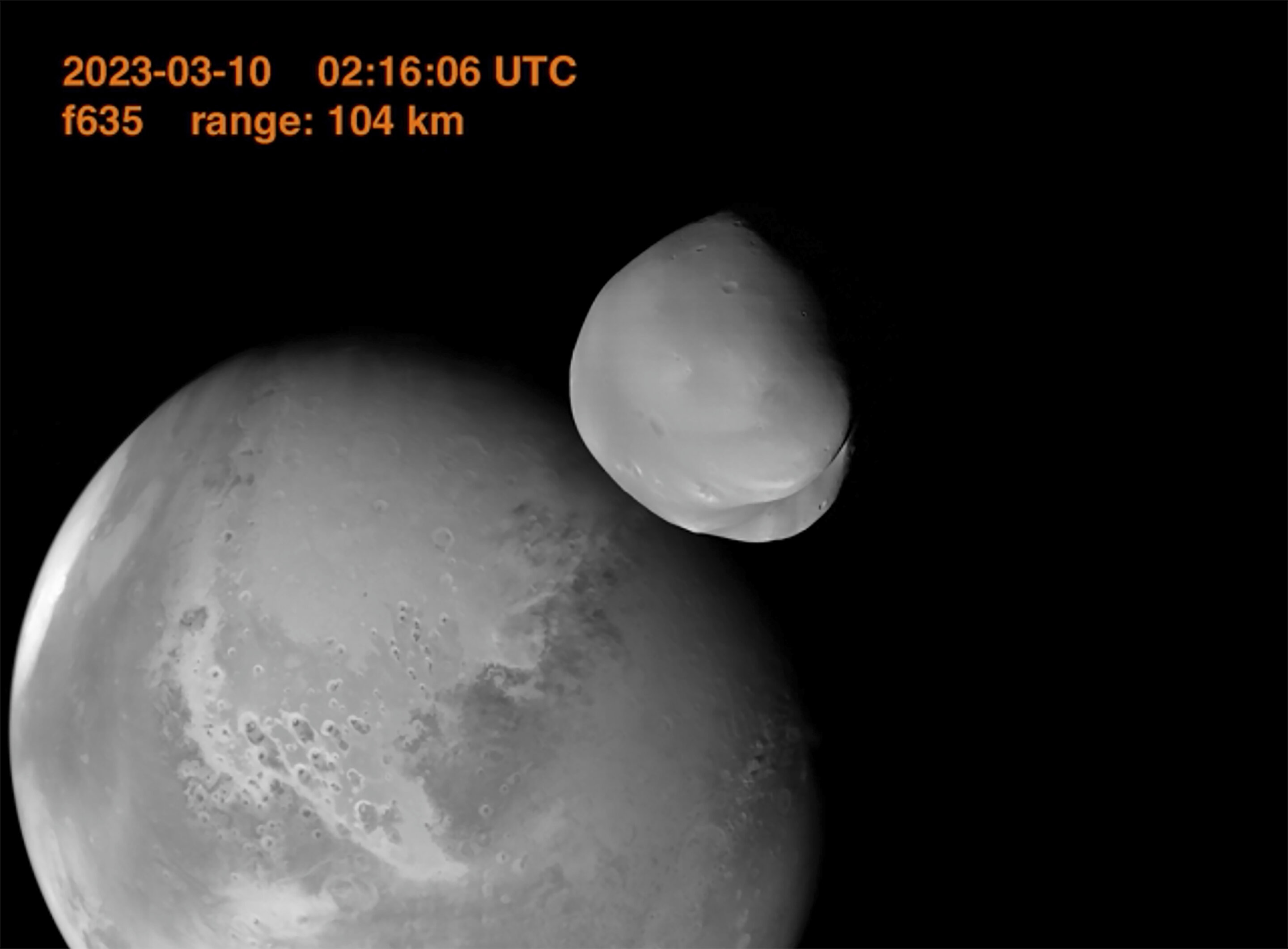The United Arab Emirates' Amal spacecraft, also known as "Hope," has captured the most detailed photos to date of Mars' little moon, Deimos. The spacecraft flew within 62 miles of the moon, allowing for close-up shots that have never been seen before. The photos were released on Monday, and the spacecraft also captured images of Mars that photobombed the pictures.
The mission
The UAE's Amal spacecraft has been orbiting Mars since February 2021, conducting scientific research and gathering data to learn more about the planet and its environment. The mission is part of the country's efforts to explore space and inspire future generations of scientists and researchers.
Close-up shots of Deimos
The spacecraft's recent flyby of Deimos has provided scientists with the most detailed images of the moon to date. The photos show the little-explored far side of the odd-shaped, cratered moon, which is just 9 miles by 7 miles by 7 miles. The spacecraft observed Deimos from a distance of 62 miles, making it the closest any spacecraft has been to the moon in almost 50 years.
Deimos vs. Phobos
Mars has two moons, Deimos and Phobos. Phobos is almost double the size of Deimos and orbits much closer to Mars, making it easier to study. Deimos' orbit around Mars stretches 14,000 miles out, making it more challenging to study. The recent photos of Deimos indicate that it may be of Martian origin, unlike the leading theory until now, which suggested that it was an asteroid captured by Mars' orbit eons ago.
What scientists say
Hessa al-Matroushi, the mission's lead scientist, stated that "Phobos has got most of the attention up until now – now it's Deimos' turn!" She added that the recent images of Deimos show that it is not an asteroid that got captured in Mars' orbit but may be of Martian origin, possibly from the bigger Martian moon or from Mars itself. The findings were presented at the European Geosciences Union's general assembly in Vienna on Monday.
Future plans
The UAE's Amal spacecraft will continue to sweep past Deimos this year, but not as closely as the March 10 encounter. The spacecraft will continue to gather data and conduct scientific research as it orbits Mars, providing valuable information for future missions to the planet.




0 Comments